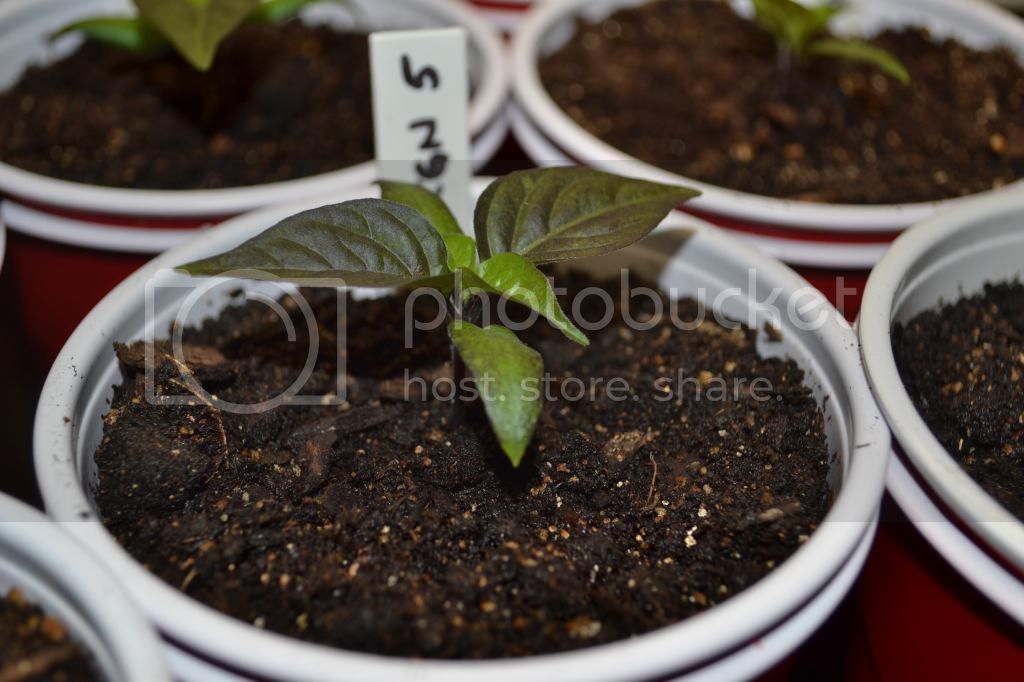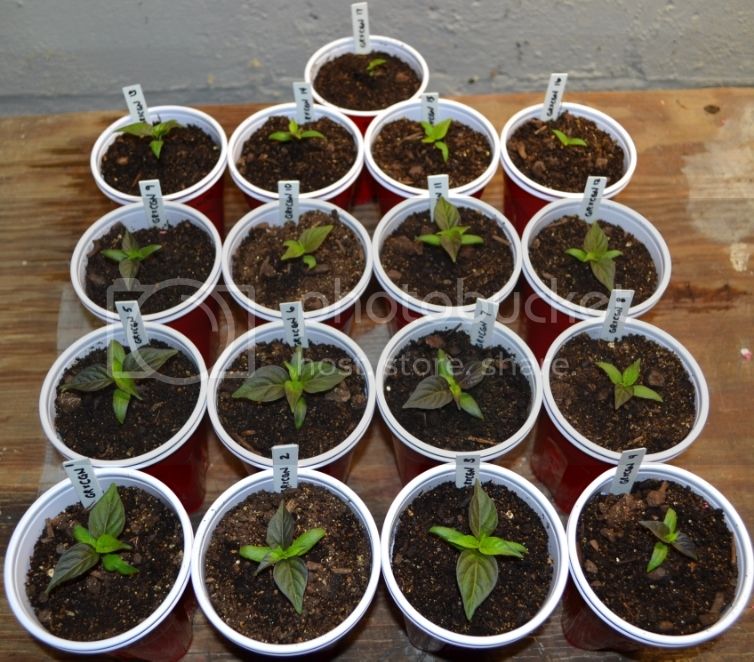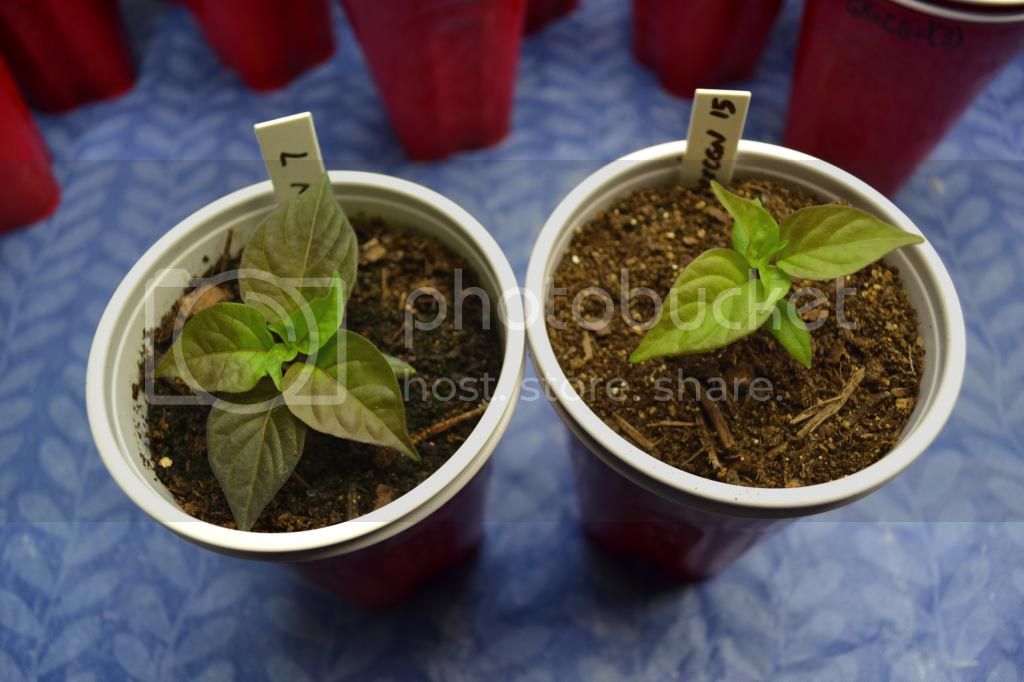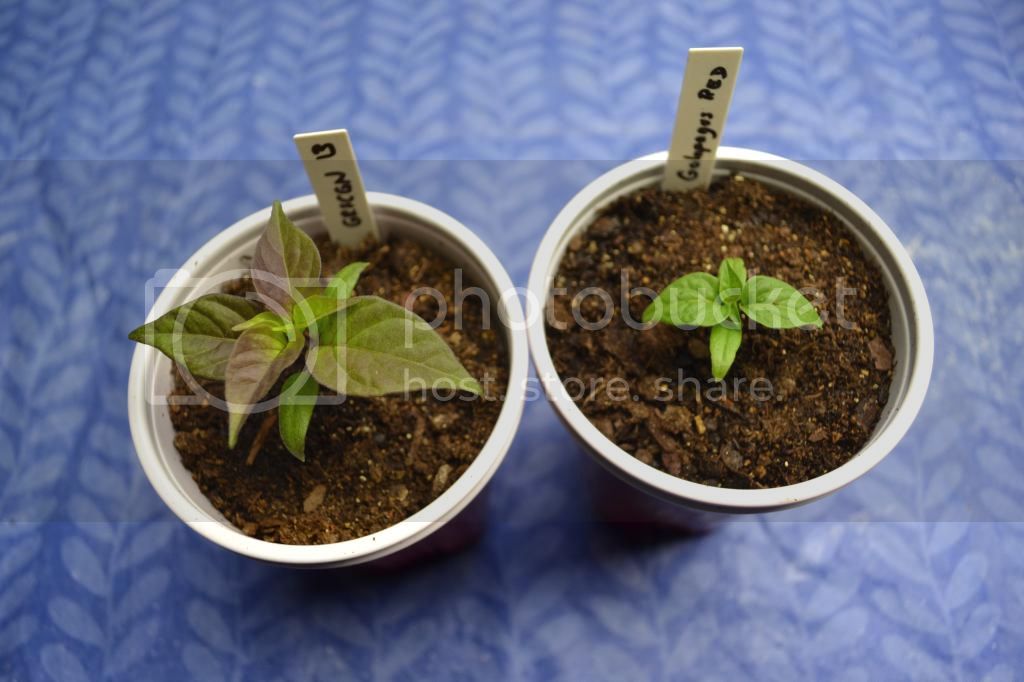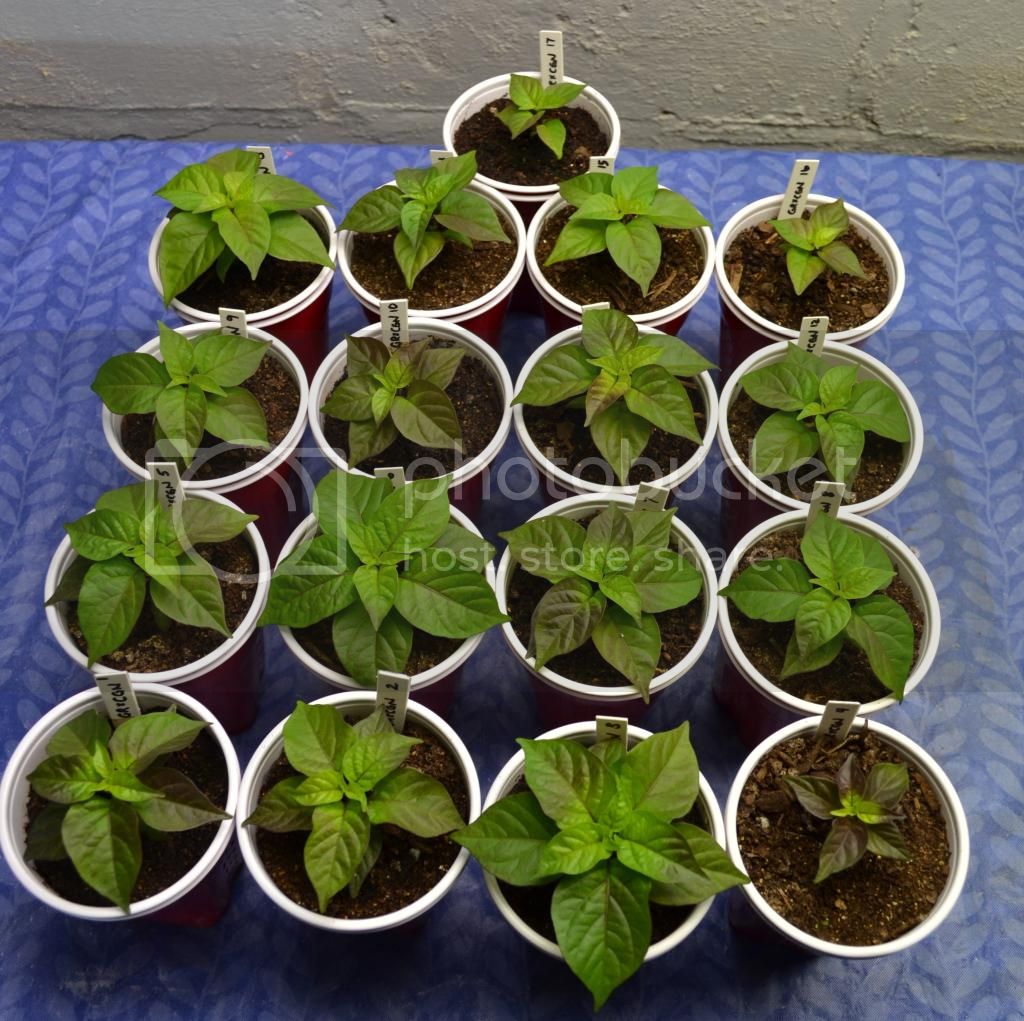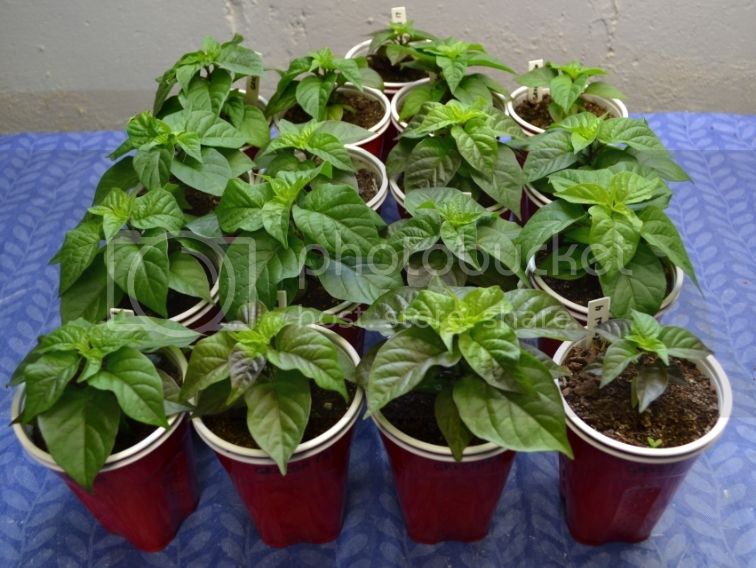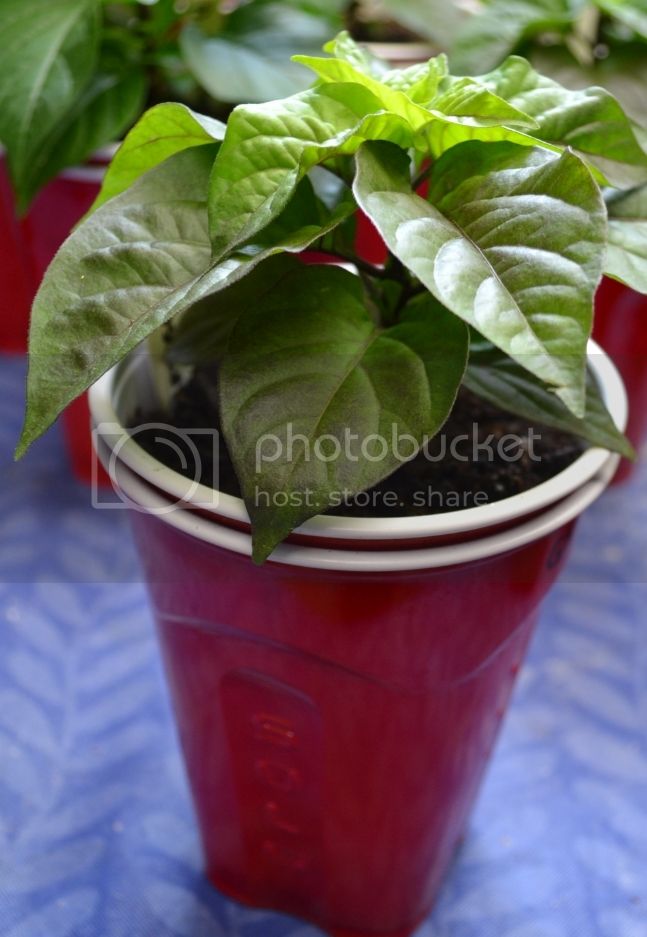Last year I decided I wanted to try to learn to cross two pepper varieties. I chose two of my favorites, the Galapagos Red Habanero and the CGN 21500 pepper. The Galapagos Red was the mother parent and the CGN 21500 the father. I also chose the CGN 21500 because of its purplish color, hoping to get some of this color in the crossed plants to help ID the fact that I crossed it properly. Some of the first attempts did not produce pods but I was finally successful and got two smaller crossed pods growing on my Galapagos Red Plant. I was able to let them ripen in the house after the first frost of the season and got a total of 18 seeds out of them. I planted these seeds Jan. 1 and was able to get 17 of the 18 seeds to germinate and lucky me, the plants are showing some of the darker color from the CGN 21500 father. One of the plants I pictured below. I will continue to update this post as time allows. If anyone has experience with the next stages of this process I would love the input.
